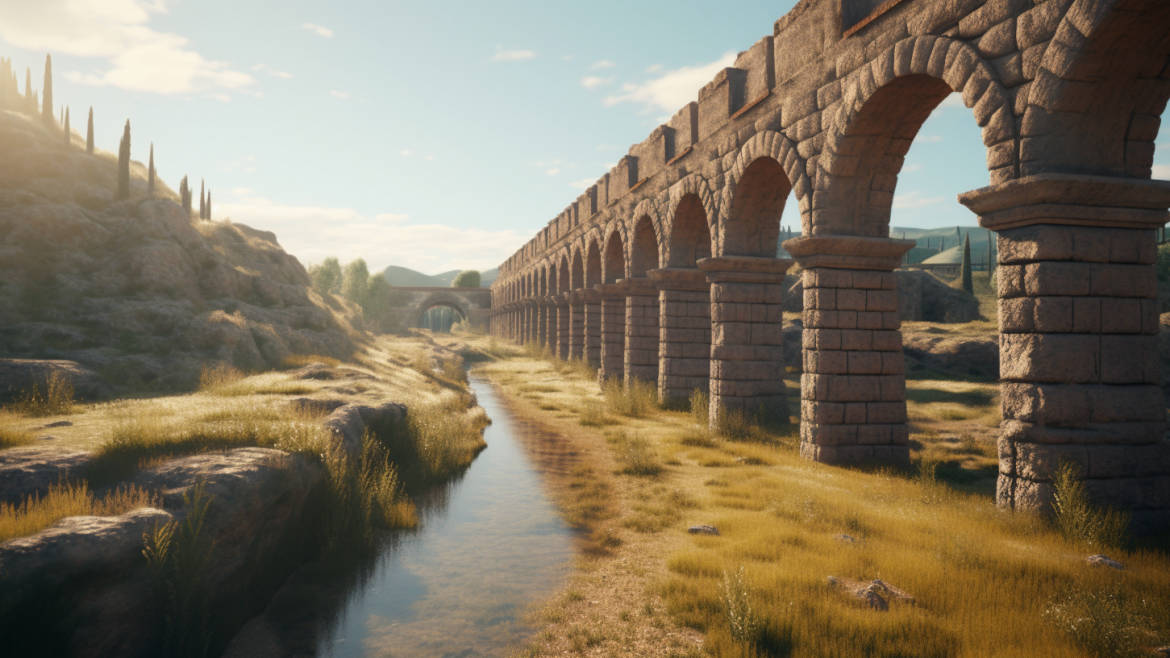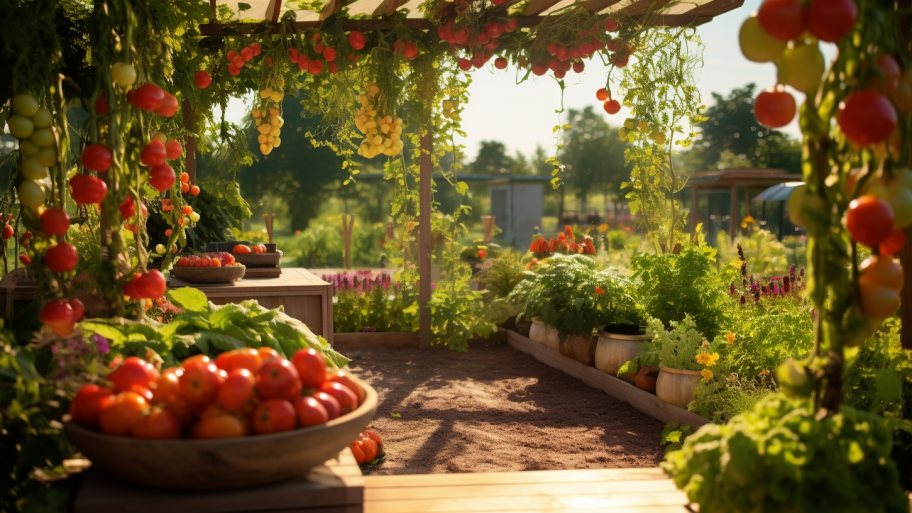The Romans were renowned for their engineering prowess, and their innovations in water management stand as a testament to their skill and ingenuity. Roman society was dependent on a reliable water supply, not only for agricultural purposes but also for public baths, fountains, and domestic use. To meet these demands, they developed a sophisticated network of water infrastructure that continues to inspire modern engineers and horticulturists alike.1
Aqueducts: One of the most iconic symbols of Roman engineering, aqueducts were monumental structures that carried water from distant sources to urban centers. These gravity-based systems utilized a gentle slope to transport water across vast distances, often traversing valleys and mountains via bridges and tunnels. The Romans constructed over 11 aqueducts in Rome alone, with the longest, the Aqua Marcia, stretching approximately 91 kilometers (57 miles).2 3
Cisterns and reservoirs: To store water for later use, the Romans built cisterns and reservoirs. These large, underground or aboveground structures collected rainwater or water from aqueducts and kept it clean and fresh. The stored water was then distributed to gardens, fields, and households through a network of pipes and channels.4
Water-lifting devices: Roman engineers invented various water-lifting devices to move water from lower to higher elevations. The Archimedes’ screw, for example, was a large, helical screw encased in a cylindrical tube that could raise water when rotated. Another invention, the water wheel, used the power of flowing water to turn a series of buckets or scoops, which lifted water to a higher level.5
Drip irrigation: While the Romans did not invent drip irrigation, they refined and improved the technique. Drip irrigation allowed water to be delivered slowly and directly to plant roots, reducing water waste and promoting healthier plant growth. Clay pots or porous stones were buried near plants, and water would gradually seep out, providing a steady supply of moisture.6
These innovations in water management allowed the Romans to grow a diverse range of plants in their gardens, many of which can be grown in modern gardens as well. Here are some specific examples of plants from Ancient Rome that you can cultivate today:
- Artichokes (Cynara scolymus)
- Asparagus (Asparagus officinalis)
- Figs (Ficus carica)
- Bay laurel (Laurus nobilis)
- Lavender (Lavandula spp.)
- Rosemary (Rosmarinus officinalis)
- Saffron (Crocus sativus)
- Grapevines (Vitis spp.)
- Almonds (Prunus dulcis)
- Plums (Prunus domestica)
By incorporating these plants into your garden and emulating Roman water management techniques, you can create a beautiful, productive, and water-efficient landscape that pays homage to the ingenuity of Ancient Rome.
In the next series of articles, we will investigate the gardening techniques of the Inca Empire, and more generally, the horticulture of the Andes.




